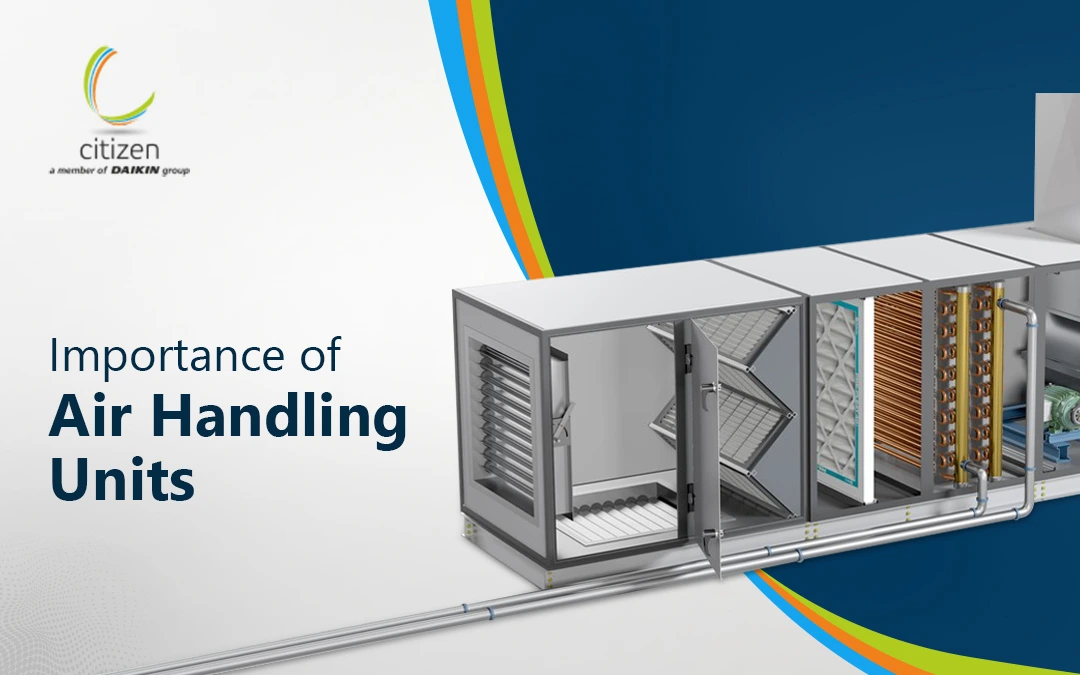In the evolving landscape of indoor environments, the air handling unit (AHU) has become far more than just a piece of ventilation equipment. It’s the engine that drives indoor air quality, thermal comfort, and operational efficiency. Whether it’s a hospital, a data center, or commercial complex, the performance of an entire HVAC setup often depends on how intelligently its air handling unit system is designed and maintained.
Today, as buildings get smarter and sustainability becomes non-negotiable, understanding the importance of AHUs is no longer optional but it’s essential.
AHU as a Strategic Asset: More Than Utility
Traditionally, AHUs were viewed as back-end machinery hidden in plant rooms. But modern facility managers and developers now recognize them as strategic assets systems that directly influence health, comfort, and brand value.
A high-performance AHU contributes not only to consistent air quality but also to a building’s sustainability credentials. Many certified green buildings attribute part of their success to efficient air distribution and smart control achieved through well-engineered AHUs.
For instance, during the pandemic, facilities that had advanced filtration and zoning through their AHUs could maintain cleaner, safer environments. That’s because an AHU doesn’t just move air, it controls what kind of air circulates and how it impacts occupants. In that sense, its importance extends beyond comfort into resilience and wellbeing two areas that define the future of built environments.
The ROI Perspective: AHUs as Long-Term Investments
When companies assess HVAC costs, the focus often falls on upfront price tags. Yet, the true value of an air handling unit system lies in its lifecycle performance.
A well-designed AHU can cut operational energy use by 20–35% compared to older systems. Features like variable frequency drives (VFDs), EC fans, and optimized coil design reduce energy wastage, while advanced control sequences ensure the system runs only when required.
Beyond energy, a well-engineered AHU reduces maintenance downtime, filter replacement frequency, and motor wear lowering total cost of ownership. Over a 10-year period, that can translate into substantial ROI and a smaller carbon footprint.
In short, the importance of an AHU isn’t limited to performance, it’s about how intelligently it turns energy into comfort without draining operational budgets.
The Hidden Link Between AHUs, Comfort & Productivity
While many recognize AHUs for managing temperature and air quality, few understand their role in human performance. Studies now show that indoor comfort directly impacts concentration, fatigue, and overall productivity.
An efficient AHU ensures uniform airflow distribution, no hot or cold spots, no stuffy zones by maintaining consistent temperature and humidity across all spaces. This balance reduces physical discomfort and cognitive fatigue among occupants.
In workplaces, schools, and healthcare settings, that comfort translates into measurable benefits: fewer complaints, better focus, and improved wellbeing. This is why the importance of air handling units goes beyond machinery it’s about optimizing the environment where people live, work, and recover.
Climate Adaptability and Resilience: One Size Doesn’t Fit All
India’s climate diversity alone demonstrates why AHUs must be adaptable. From humid coastal cities like Mumbai to dry regions like Jaipur, the air handling unit system must handle drastically different conditions.
In humid zones, dehumidification and anti-corrosion construction are vital. In dry regions, energy recovery and humidification features prevent air dryness and static buildup. Advanced units today use thermal break profiles, double-skin construction, and climate-specific coil selections to ensure year-round reliability.
This adaptability underscores AHU’s importance, it’s not just a ventilation unit but a resilient system tailored to local conditions. Customized AHUs ensure every cubic meter of air delivered is clean, conditioned, and compliant with comfort standards regardless of external climate variations.
Smart AHUs and the Future of Building Intelligence
The rise of automation has brought forward the era of the smart AHU, a system that learns, adapts, and optimizes in real time.
Equipped with IoT-enabled sensors, smart AHUs continuously monitor temperature, humidity, CO₂, VOCs, and energy use. The data is sent to a Building Management System (BMS), enabling predictive maintenance and performance benchmarking. This means maintenance teams can address inefficiencies before they cause breakdowns.
Future-ready AHUs are also designed to integrate with renewable energy systems, using waste heat recovery or solar-assisted pre-conditioning to reduce load on chillers. This evolution positions AHUs as central players in achieving net-zero energy targets.
In essence, a smart AHU isn’t just reactive, it’s intelligent, ensuring consistent comfort and sustainability while extending equipment life.
Risk Mitigation, Compliance & Safety
Few realize that AHUs are also frontline defenders of safety. In critical environments like cleanrooms, pharmaceutical manufacturing, or healthcare facilities their design determines whether contamination risks are eliminated or magnified.
An AHU for hospitals, for example, must maintain strict pressure differentials between isolation rooms, operation theatres, and general areas. This prevents airborne pathogens from spreading. Similarly, in industrial setups, AHUs manage fumes and particulate removal to meet occupational health standards.
Moreover, compliance with ASHRAE, NABH, and local building codes often depends on AHU performance benchmarks. Poorly designed units can lead to mold formation, duct contamination, or non-compliance penalties.
That’s why reliable air handling unit manufacturers play a crucial role their engineering precision ensures safety, hygiene, and long-term performance across sectors.
Final Thought
The air handling unit is not an accessory it’s the heartbeat of every HVAC ecosystem. Its role spans far beyond temperature control; it dictates how a building breathes, feels, and performs over time.
As smart infrastructure and sustainable design reshape industries, the importance of air handling units will only grow. For organizations planning new facilities or modernizing old systems, understanding this importance can be the difference between ordinary performance and extraordinary efficiency.
Forward-thinking air handling unit manufacturers like Citizen Industries continue to redefine how AHUs contribute to comfort, energy savings, and environmental responsibility ensuring that every breath indoors reflects engineering excellence.


